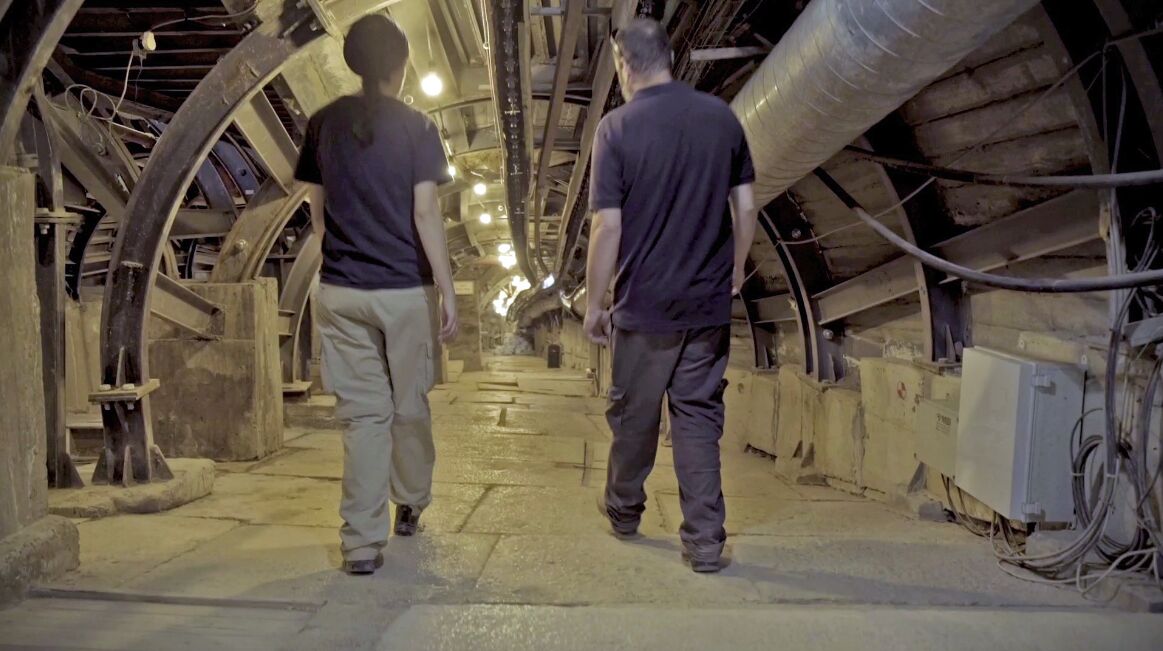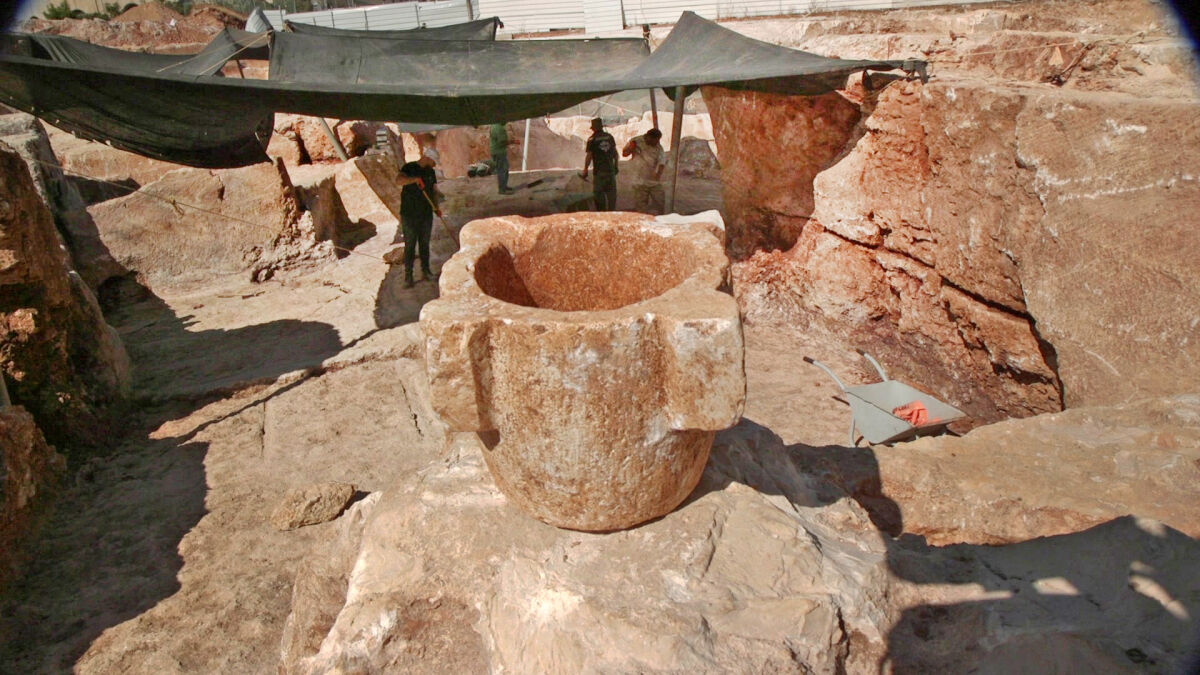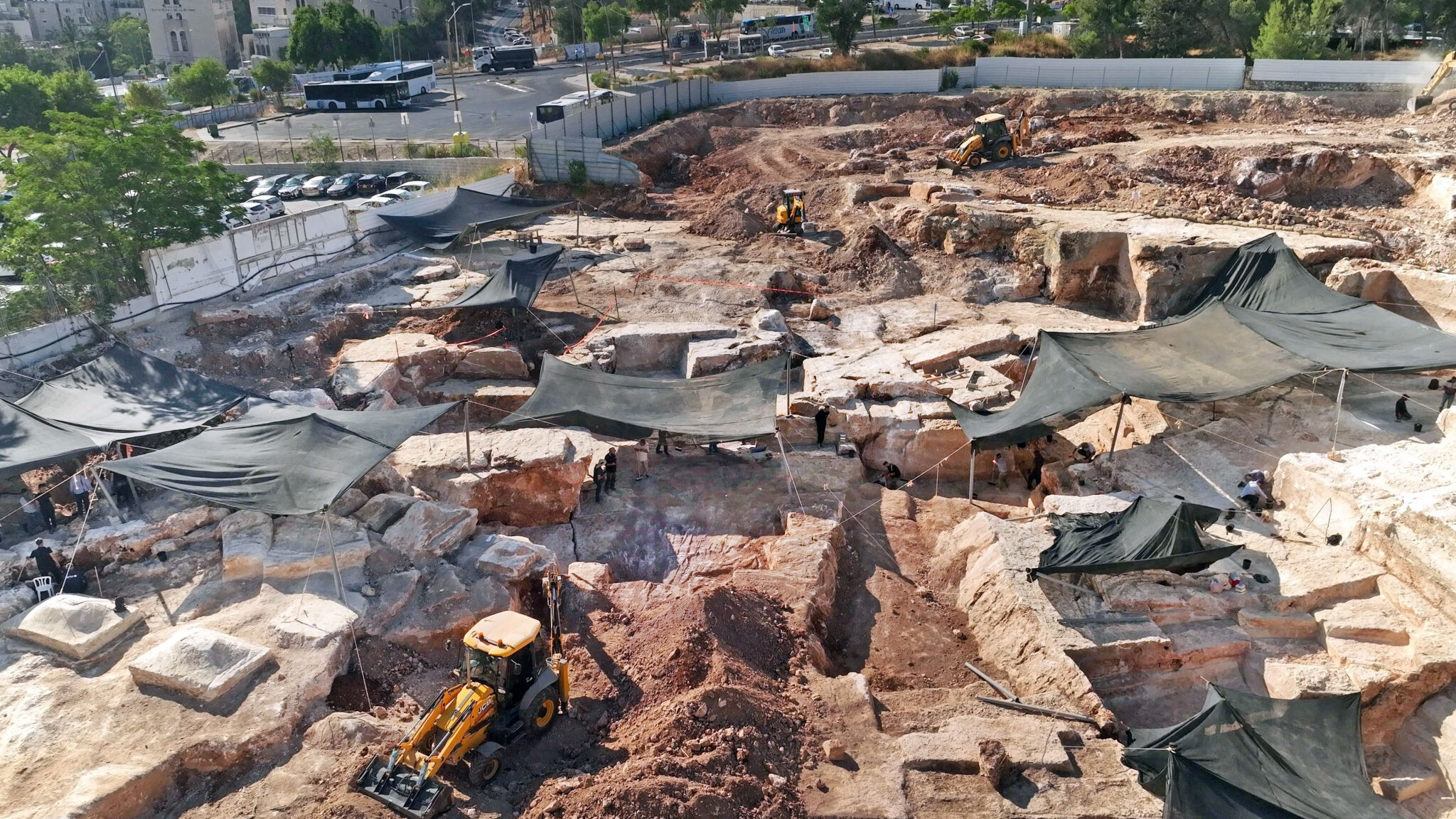In Jerusalem’s Har Hotzvim industrial area, the Israel Antiquities Authority (iaa) has uncovered an enormous stone quarry—the “largest ever discovered from the late Second Temple Period.” The excavation area extends about 3,500 square meters, revealing just one section of this huge quarry.
The various-sized building stones, as well as cutting trenches indicate the size of the blocks being quarried.

Michael Chernin and Lara Shilov, excavation directors on behalf of the iaa, summarized their discovery in a recently issued press release. “Most of the building stones extracted from here were huge rock slabs, whose length reached ca. 2.5 meters, their width was 1.2 meters and they were 40 centimeters thick,” they said.
Each such quarried block weighed two-and-a-half tons! The impressive size stones this quarry produced likely attests to their intended use in one of Jerusalem’s many royal construction projects in the late second temple period, beginning under King Herod the Great’s reign between 37–4 b.c.e.
After determining the size of the stones from negative quarry imprints, Chernin and Shilov noted exact stone parallels found elsewhere in Second Temple Period Jerusalem, including along the famous Pilgrim’s Road (beneath the City of David). “It is reasonable to assume, with due caution, that at least some of the building stones extracted here were intended to be used as pavement slabs for Jerusalem’s streets in that period,” they explained.
In another Israel Antiquities Authority excavation ongoing for the past few years in the City of David, the archaeologists discovered a paved street (the “stepped street”—the “Pilgrim’s Road”) which is also dated to the late Second Temple Period, under the rule of successive Roman Procurators—amazingly, it turns out that the paving stones of this street are exactly the same size and thickness, and share the identical geological signature as the stone slabs that were extracted from the quarry now being exposed in Har Hotzvim.

Along with the large building stones, a remarkable complete stone vessel was discovered. Such stone vessels were widely used during this period, given that their material, according to Jewish ritual law, does not become impure. One of the earliest observations of this practice comes from the late first century New Testament book of John: “And there were set there six waterpots of stone, after the manner of the purifying of the Jews” (John 2:6).

The stone vessel had been found almost by chance by the excavators. “This is a stone purification vessel of the type that served the Jewish community during the Second Temple period,” explained Lara Shilov. “It is possible that it was produced on the spot in the quarry itself, or was especially brought to the site for the benefit of the workers.”
Finds like this are a testament to a robust Jewish presence in the land of Israel and right at a time before the intense Roman destruction of 70 c.e. iaa director Eli Eskosido offered concluding remarks about the discovery:
Revealing this huge quarry, just before the Nine Days and the Ninth of Av, the time of year when the Jewish People the world over mourns the Jerusalem that was lost in these days, is symbolic and very moving. The special stone vessels discovered here will be presented for families to see at the Jay and Jeannie Schottenstein National Archaeological Campus in Jerusalem, which opened this summer for the first time to the public. I invite everyone to join our tours, and to meet a piece of the past that just now surfaced out of the ground.

